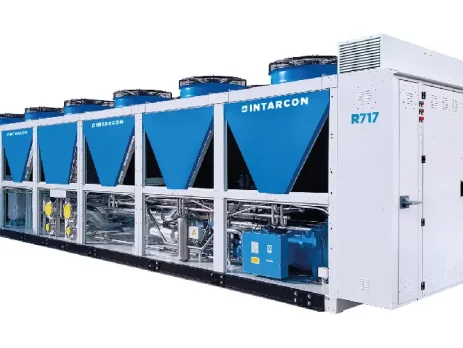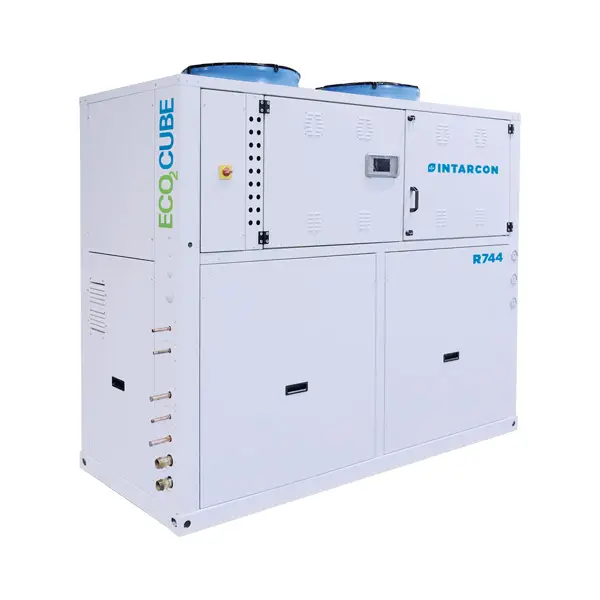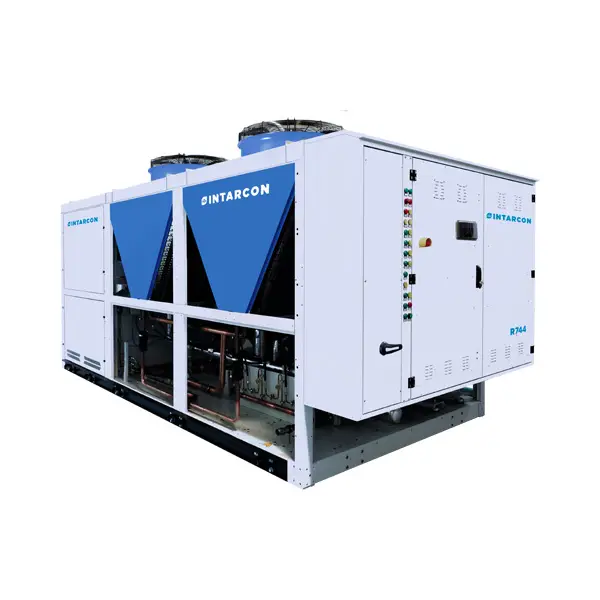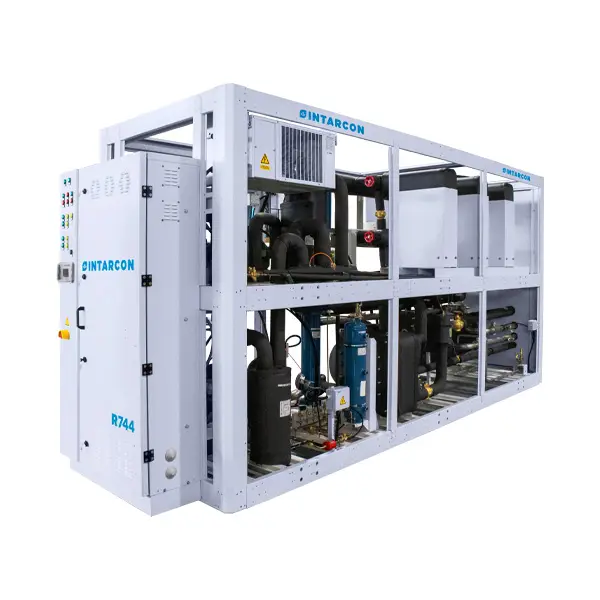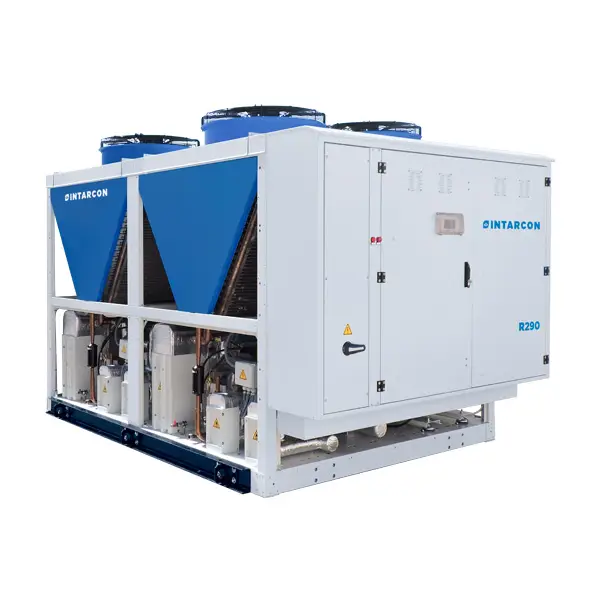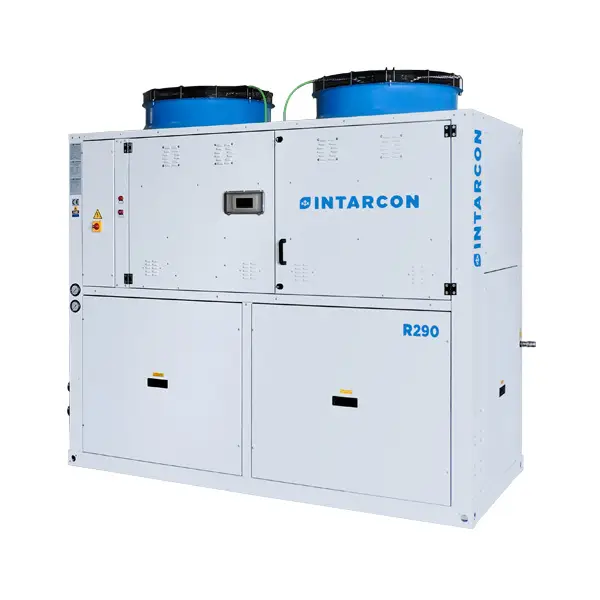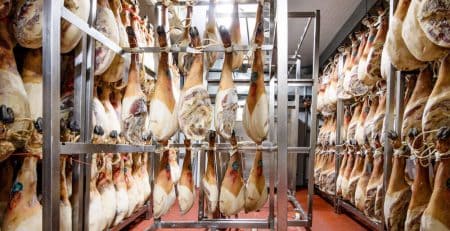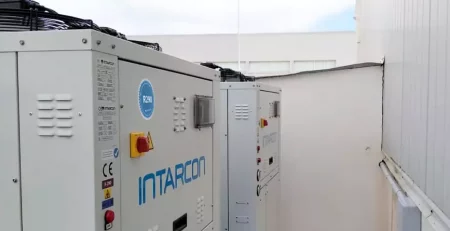Energy efficiency in refrigeration systems
INTARCON2024-09-11T09:39:45+02:00Like many companies in the sector, INTARCON has had to adapt to the different legislative requirements, seeking to adapt to environmental protection regulations, with the clear objective of improving energy efficiency. For this reason, it is committed to the use of natural refrigerants that do not negatively affect environmental chemistry.
The European Union, through the publication of legislative proposals, is trying to lead the energy transition based on the drastic reduction of CO2 emissions into the atmosphere. For this reason, major changes are being made in the refrigeration sector in order to increase energy efficiency and reduce the carbon footprint.
A large part of the industrial sector establishes electricity consumption as one of its major expenses, directly influencing the competitiveness of its products. This has encouraged the interest in energy efficiency in their processes to cope with fluctuating energy prices.
Before proceeding to design an installation, it is necessary to study its requirements in order to obtain the solution that best applies to the project. Some of the most important aspects are listed below:
Thermal load optimisation
Excess power causes the equipment to operate at partial loads, with a consequent decrease in energy efficiency. This leads to an increase in the investment and energy cost of the system, and therefore to higher product prices. It is therefore crucial to optimise the design of the cold room or process (minimising losses due to transmission, infiltration, defrosting, etc.), and an exhaustive calculation of thermal loads. In addition, it will be essential to ensure that the installation is used properly (avoiding unnecessary door openings, etc.).
- Some ways to improve energy efficiency:
- Add some support equipment to cushion thermal peaks.
- Use the waste heat from the exhaust air.
- Recover waste heat from process liquids.
- Shift part of the thermal loads to off-peak hours.
- Reduce the consumption of pumps in indirect systems.
- Use free cooling.
- Adopt certain measures in refrigerated rooms.
Choice of refrigerant
Throughout the history of refrigeration, various types of refrigerants have been used (CFCs, HCFCs, HFCs, HC, inorganic compounds such as ammonia, or even new refrigerants based on nanotechnology, nanofluids). This indicates that there is no ideal refrigerant, but there are some factors to consider when choosing a refrigerant:
- Performance factors (COP and SEPR).
- Environmental factors (PCA and ODP).
- Economic factors (cost, handling, storage and disposal).
- Safety factors (toxicity and flammability).
More and more companies are adapting to the use of low GWP refrigerants, as a result of the European regulations for the use of refrigerant gases (F-Gas Regulation). Among the solutions to facilitate the adaptation to the regulation of customers in the medium term, INTARCON has developed the line of intarCUBE A2L approved units, designed to work either with R-449A refrigerant with a GWP=1398 or with R-454C with GWP<150.
INTARCON provides solutions using natural refrigerants such as: ammonia or R-717 (NH3), carbon dioxide or R-744 (CO2), and propane or R-290 (C3H8). Refrigerants chosen for their high thermodynamic performance, low cost and low or zero greenhouse effect, making them the refrigerants of the future. They represent a saving compared to hydrofluorocarbons (HFCs), as the latter have high prices due to their high GWP tax and the difficulty of supply, which will increase over the years.
Systems with R-717 (NH3)
Ammonia is the most widely used refrigerant in industrial refrigeration, due to its low cost and high heat transfer coefficient. It does not alter the ozone layer and does not contribute to the greenhouse effect due to its easy integration into the environmental chemistry through the nitrogen cycle. It can be installed in unoccupied interiors or outdoors, where it dissipates quickly in the event of a leak as it is less dense than air.
INTARCON has developed a range of ammolite chiller with R-717 with the best safety features, microchannel condensation and very low refrigerant charge (≃ 70 g/kW), both in the direct and indirect expansion option, resolving the difficulties presented by this type of system, thanks to the use of electronic expansion valves and ammonia-miscible oils.
Systems with R-744 (CO2)
CO2 has a low critical temperature and therefore has high working pressures. Its high heat transfer coefficient allows it to offer high performance and efficient heat recovery, as well as low pumping power in direct systems.
INTARCON offers the ECO2SYSTEM range, compact or rack type units for outdoors or machine rooms, with subcritical or transcritical operation, integrated or remote gas-cooler, parallel compressor to improve the efficiency of transcritical units in hot climates, and the capacity to include desuperheater, as well as a wide range of evaporators.
ECO2SYSTEM units are an efficient solution for supermarkets, with the ability to serve medium (-8 °C) and low temperature (-28 °C) simultaneously, and to recover condensing heat for defrost or hot water loop support. Experienced in cascade design with other refrigerants such as R-290, HFCs or glycols.
Systems with R-290 (C3H8)
The use of hydrocarbons may meet with reluctance due to their high flammability (category A3), but the established refrigerant limits mean that equipment using these refrigerants does not pose a risk to people. In addition, the industry’s extensive experience with flammable refrigerants such as isobutane (R-600a) in domestic refrigeration gives customers confidence, facilitating acceptance and sales.
INTARCON is committed to propane as a refrigerant due to its almost zero greenhouse effect (ODP) and excellent thermodynamic performance, developing chiller plants, evaporators with built-in waterloop compressor, and compact industrial superblock or commercial intarblock units.
Direct or indirect expansion systems
- Direct: It stands out for its high efficiency as the evaporator is in direct contact with the medium to be cooled. The disadvantage is the high refrigerant charge and the possible problems of oil return. It also highlights the need for a correct start-up by a specialised professional, and the risk of leakage with the capacity to contaminate the interior environment and the stored product.
- Indirect: In this case, the evaporator cools a heat transfer fluid (usually glycol water or brine) that is in contact with the medium to be cooled. The main advantage is the drastic load reduction due to the confinement of the refrigerant in the plant, increasing safety in the case of the use of toxic or flammable refrigerants. The disadvantage is that they require a correct design of the water distribution system and the use of frequency variators to counteract the consumption of the pumps.
Compressors
It is the most power-consuming component of the system (40 – 60 %). Its efficiency depends on the operating conditions, requiring the most stable operation possible, as its internal regulation sacrifices efficiency, especially at low partial loads. It is recommended to distribute the cooling load among several compressors, or to use frequency inverters to improve efficiency.
In this field, INTARCON offers a range of intarCUBE INVERTER plants and a range of Full-INVERTER chiller plants with which it aims to provide a solution to the variable cooling demands of the system by modulating the operation of the compression stage, reducing compressor start-ups and shutdowns, and achieving significant energy savings as well as an increase in the useful life of the compressor.
Condensation heat recovery
In the air conditioning and refrigeration sector, aerothermal technology stands out as a source of renewable and clean energy, which uses the thermal energy generated during the production of cold, allowing the demand for domestic hot water (DHW) and/or support for the hot water loop to be covered. The use of recovered energy, in addition to increasing the efficiency of the system, reduces the payback time of the equipment investment.
This technology is currently being applied as a boost to the decarbonisation policy during the current energy transition stage to replace the use of fossil fuels, thanks to its ability to be coupled to other systems such as:
- Heating (underfloor heating, low temperature radiators, etc.).
- Sanitary hot water (sanitising, cleaning, scalding, etc.).
- Steam production.
- Drying and dehumidification processes.
- Evaporation, pasteurisation, distillation and concentration processes.
The energy efficiency of INTARCON refrigeration equipment, which includes heat recovery, is increased thanks to the use of condensation heat for its accumulation and subsequent use for hot glycol defrosting, avoiding the use of electrical resistances, nor interrupting the production of cold.
Desde INTARCON, además de incluir la política de la descarbonización en todos sus productos, también la impulsa en la línea de producción y gestión de la empresa, mediante la construcción de unas instalaciones con vistas a una producción limpia o “green manufacturing”.


